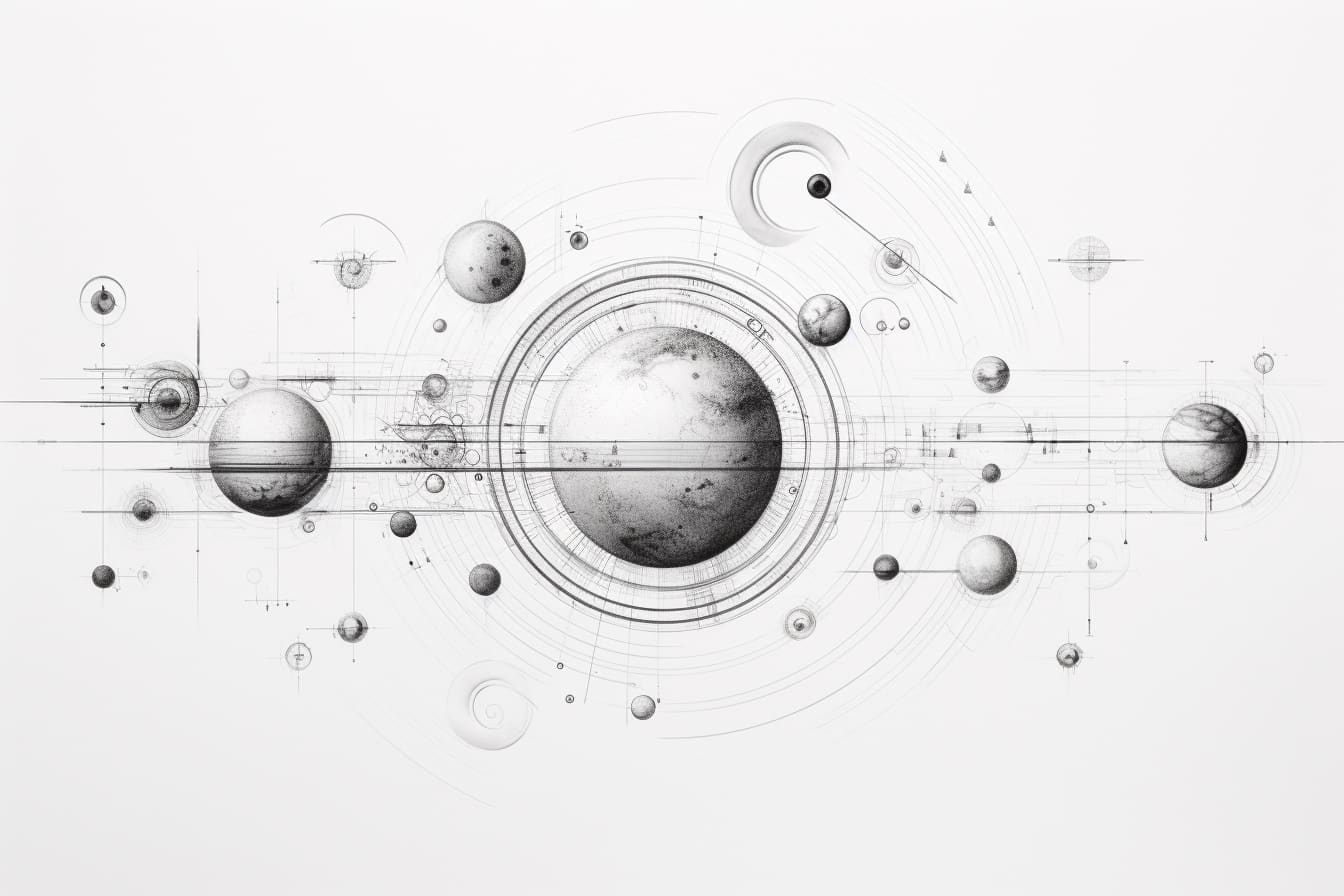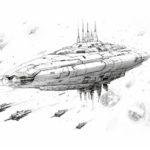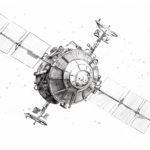Welcome to the fascinating world of drawing Orbital Diagrams! Orbital Diagrams are a visual representation of electron configuration in atoms and molecules, providing a clear and structured way to understand the distribution of electrons within the energy levels of an atom. By mastering the art of drawing Orbital Diagrams, you will unlock the key to comprehending the behavior and properties of elements in the periodic table. Join me on this artistic journey as we delve into the intricate patterns and relationships that govern the world of chemistry, and discover the beauty and complexity of electron configurations through the art of drawing Orbital Diagrams. Let’s dive in and explore the wonders of the atomic world through the lens of art and science!
Materials Required
To draw an orbital diagram, you will need the following materials:
- Drawing paper or sketchbook
- Pencils (preferably different hardness for shading and details)
- Eraser
- Ruler (optional, for drawing straight lines)
- Compass (optional, for drawing perfect circles)
- Protractor (optional, for measuring angles)
- Colored pencils or markers (optional, for adding color to the diagram)
How to Draw an Orbital Diagram: a Step-by-step Guide
Step 1: Gather Your Materials
- Get a pencil (preferably a mechanical pencil for precision), a good eraser, a ruler, and a sheet of drawing paper.
Step 2: Outline the Orbital Diagram
- Start by drawing a large circle in the center of your paper. This will represent the nucleus of the atom.
- Divide the circle into four equal sections by drawing two perpendicular lines through the center. These sections will represent the different orbitals.
Step 3: Draw the s Orbital
- In one of the quadrants, draw a smaller circle closer to the center. This represents the s orbital, which is spherical in shape.
Step 4: Draw the p Orbitals
- In the other three quadrants, draw dumbbell shapes with one lobe on each side of the nucleus. These represent the three p orbitals (px, py, and pz) which are oriented along the x, y, and z axes respectively.
Step 5: Label the Orbitals
- Label the s orbital as “s” and the p orbitals as “px,” “py,” and “pz” accordingly. This will help differentiate between the different orbitals.
Step 6: Add Electrons
- Draw arrows or dots within each orbital to represent the electrons. Remember the Aufbau principle and Hund’s rule when filling the orbitals with electrons.
Step 7: Add Protons and Neutrons
- Add the number of protons and neutrons in the nucleus by drawing smaller circles (protons) and dots (neutrons) inside the central circle.
Step 8: Refine and Detail
- Use your ruler to ensure straight lines and symmetrical shapes.
- Erase any unnecessary lines or smudges to clean up your drawing.
- Add shading or color to make your orbital diagram more visually appealing if desired.
Step 9: Finalize and Review
- Take a step back and review your drawing to ensure accuracy and completeness.
- Make any final adjustments or additions to enhance the overall presentation of your orbital diagram.
Conclusion
In conclusion, mastering the art of drawing an orbital diagram requires patience, practice, and attention to detail. By understanding the principles of electron configuration and orbital shapes, one can effectively represent the arrangement of electrons within an atom or molecule. Remember to start with a basic understanding of the periodic table and the rules governing electron placement, then use that knowledge to construct clear and accurate orbital diagrams. With dedication and perseverance, anyone can develop the skills necessary to create precise and informative orbital diagrams in their scientific studies or artistic pursuits.
Fun Facts About Orbital Diagrams
- Orbital diagrams are a visual representation of the arrangement of electrons within an atom or molecule.
- Each orbital diagram shows the distribution of electrons in the various orbitals of an atom or molecule according to the Aufbau principle, Pauli exclusion principle, and Hund’s rule.
- Orbital diagrams are a useful tool for understanding the electronic structure of atoms and molecules, as well as predicting their chemical behavior and reactivity.
- Orbital diagrams can help chemists determine the valence electrons of an atom or molecule, which are crucial for understanding bonding and molecular geometry.
- By analyzing orbital diagrams, chemists can predict the likelihood of electron transfer or sharing between atoms, leading to the formation of chemical bonds.
- Orbital diagrams can also be used to explain the concept of electron configuration, which describes the distribution of electrons in different energy levels and sublevels of an atom.
- Orbital diagrams are commonly used in chemistry education to help students visualize and understand the complex behavior of electrons in atoms and molecules.
- Understanding orbital diagrams is essential for studying topics such as molecular geometry, hybridization, and the periodic trends of the elements.
- Orbital diagrams are a key tool in quantum mechanics, providing a visual representation of the wave functions that describe the behavior of electrons in atoms and molecules.
- Orbital diagrams play a crucial role in the field of spectroscopy, where they are used to interpret the interaction of light with matter and analyze the electronic transitions that occur in atoms and molecules.
Suggestions for Scenes and Settings for Orbital Diagram Drawings
- Space Station Interior: Create a detailed drawing of the inside of a futuristic space station, with curved corridors, high-tech control panels, and astronauts floating in zero gravity.
- Alien Planet Surface: Imagine a landscape on an alien planet with strange rock formations, glowing plants, and a colorful sky filled with multiple moons and a distant sun.
- Orbital City: Draw a bustling city floating in orbit around a planet, with skyscrapers interconnected by glass walkways, flying cars zipping by, and citizens in futuristic attire.
- Asteroid Belt: Depict a scene in an asteroid belt with large rocky chunks floating in space, a distant star illuminating the scene, and a spaceship navigating through the dangerous terrain.
- Orbital Docking Station: Illustrate a space station designed for spacecraft to dock and refuel, with robotic arms extending out to assist incoming ships and a backdrop of stars and planets.
- Space Elevator: Create a drawing of a massive space elevator reaching from the Earth’s surface up into orbit, with a bustling transport hub at the top and a panoramic view of the planet below.
- Lunar Colony: Imagine a colony established on the moon, with domed structures protecting inhabitants from the harsh environment, lunar rovers traversing the rocky landscape, and Earth visible in the sky.
- Interstellar Wormhole: Illustrate a scene near a swirling wormhole in space, with distorted light and energy radiating from the portal, a spaceship hovering nearby, and the vastness of space stretching out in all directions.
- Galactic Market: Draw a bustling market scene set on a space station, with alien merchants selling exotic goods, holographic advertisements flickering overhead, and various species intermingling in the crowd.
- Exoplanet Exploration: Create a scene of a team of explorers landing on a distant exoplanet, with strange flora and fauna surrounding them, a colorful alien sky above, and their spaceship parked in the background.









